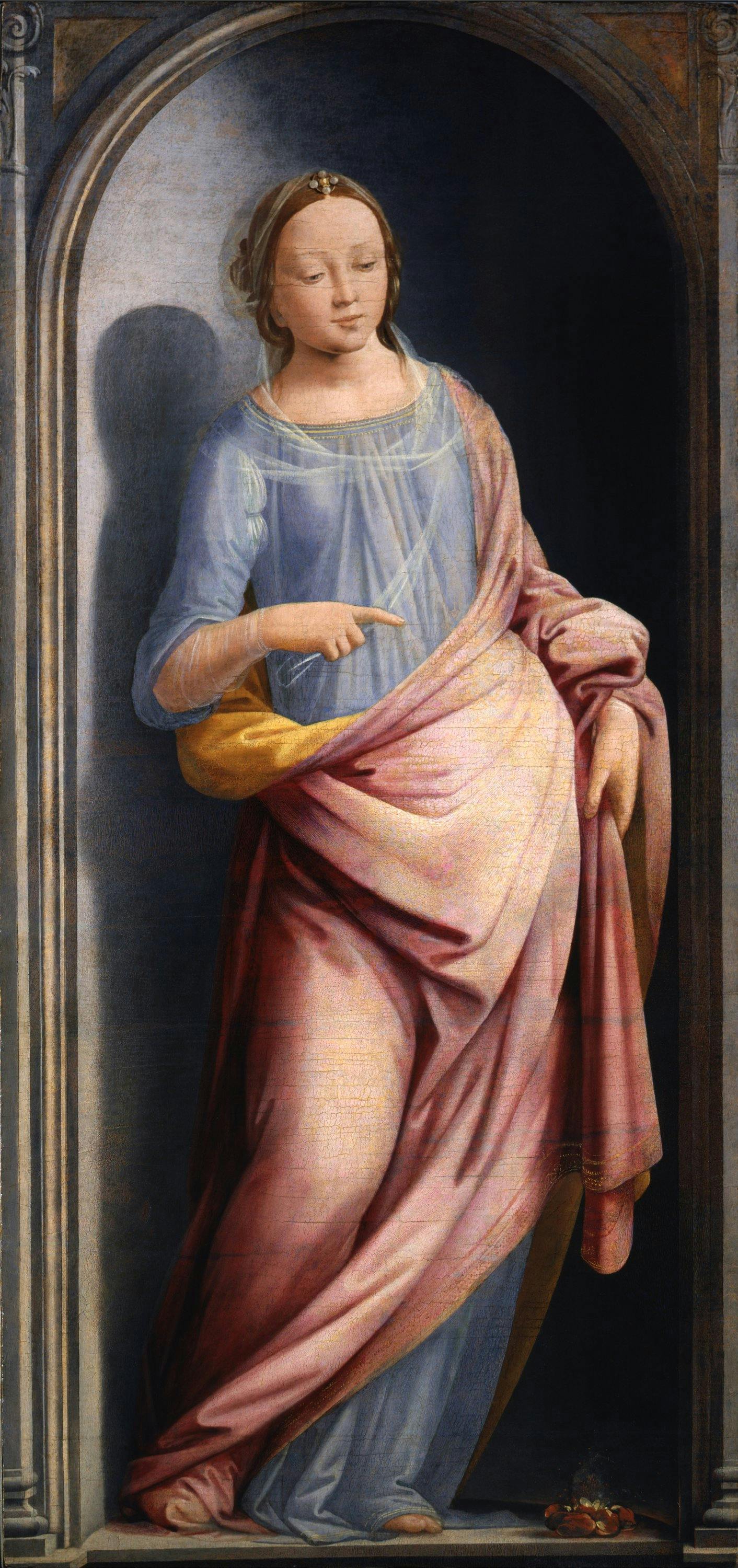Porzia
Baccio della Porta known as Fra Bartolomeo (Florence 1473 - 1517)
A Roman noblewoman, daughter of Cato the Censor and wife of Brutus, Portia traditionally embodies marital fidelity and a strong character. In fact, the historian Plutarch narrates that the woman, after having plotted the assassination of Julius Caesar with her husband, followed him into exile without hesitating to take her own life after his death by eating hot coals.
Baccio della Porta portrays her isolated as a painted statue, in a grey stone niche bordered by pilasters with plant ornaments. The light movement of the left leg evokes a charming sway, balanced by the gesture of her hand raised to show the pile of burning embers. Portia wears no ornaments, except for the pearl hair clip pinned to the top of her head to hold the transparent veil that covers her shoulders and is draped delicately along her bust. Her gentle expression and lowered gaze in a recollected and meditative attitude make her a kind of lay virgin who would originally have been accompanied by other female figures in a larger cycle dedicated to the virtues, of which only another panel depicting Minerva survives, now in the Louvre (RF 1945 9). Baccio created these paintings a few years before taking his vows and dedicating himself exclusively to sacred subjects. The painting is therefore an important testimony when it comes to understanding the beginnings of the painter, who at that time still fully belonged the late fifteenth century tradition and was faithful to the ways of his first masters, from Ghirlandaio to Piero di Cosimo, from Lorenzo di Credi to the Flemish painters whose works were present in Florence (such as Roger van der Weyden, Hugo van del Goes, Hans Memling, Petrus Christus), from whom he had acquired the sensitivity for a lucid and clear painting that chisels colour and defines a perspective field.
S.Padovani, in Fra Bartolomeo, Firenze, 1996, pp. 55-57, n. 4; D.Frankling, Painting in Renaissance Florence 1500 – 1550, New Haven, Yale University Press, 2001, pp. 82-83.
